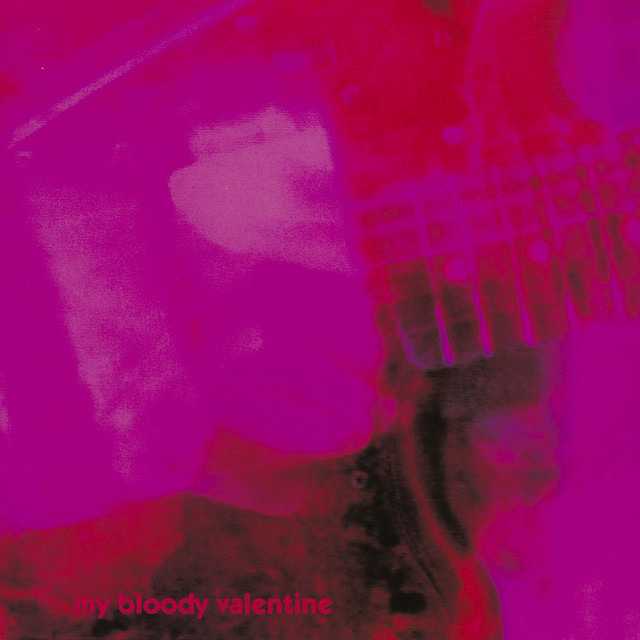Genre of the Day - Shoegaze
Album of the Day - Loveless by My Bloody Valentine (1991)
After doing some light political analysis in my last couple of columns, I fear I’m fresh out of any insights and like many of my peers just feel resolute at this point to another new uncertain environment in American politics. My room has been chillingly cold the past couple of nights, which I’m not sure is due to a rogue housemate messing with the thermostat or that the covert LA chill is beginning to sink its teeth in with November, and I’ve had strange dreams to match. Yesterday, I had a dream that I was appointed to the Supreme Court in my old high school. I think many people want to slip into hobbies and distractions, and today’s genre makes me pine a bit for an assortment of guitar pedals so I too can get lost in a murky, dreamy sonic world.
Shoegaze is one of the most music-nerd music genres of all time, so I’m pleased it made it to being one of the 366 random genres this year. The genre is essentially antithetical to yesterday’s AOR, which interchangeably stands for album-oriented rock, adult-oriented rock, and arena-oriented rock—this tri-headed load perfectly captures the music, which aspires to stand up as rock that works in any of those settings. Though across the pond in the UK and Ireland, shoegaze musicians seemed a total aberration of the forward-facing standards of how rock is meant to engage with a crowd. The term was coined by a journalist named Andy Ross in 1989 after raising an eyebrow at the bands Polly and Chapterhouse staring, more inert than one would typically expect even the most languid indie rock musician, seemingly down at their shoes without so much as a sway—really, they were eying their guitar pedals. Just as a driver must keep their eyes on the road, and only the road, the shoegazer’s fixation on the pedals modulating guitar sounds below is essential to the sound and ethos of the genre. Video killed the radio star, but also seemingly made new musicians a lot shier: though not a shoegaze artist, take a pre-solo Björk hiding in the shadows behind the speakers as an example of the timidity defining late ‘80s alt-rock.
The sonic explorations kickstarted by gothic rock and ethereal wave acts entranced a certain class of emergent bands as the ‘80s progressed. These parallel movements gradually coalesced (with some neo-psychedelia mixed in) into what would become shoegaze’s brief reign over Britain and Ireland’s alt-rock scene, presaging the rise of grunge over in the States. Shoegaze subverted the typical expectations that advanced recording technological precision would lead to astonishing, crystal-clear. Instead, these artists made a creative choice of layering and distorting the guitars and vocals by unleashing the powers of overdrive, fuzz, modulating, and delay pedals so that they constituted one spiritual entity. This experimentation engendered a community that was remarkably internally supportive, avoiding the infighting and ego-clashing that can often characterize alt music scenes. The visual minimalism and haziness of shoegaze went on to be displaced by a flashier Britpop scene more willing to set its eyes on the crowd. But shoegaze has also captured the hearts of a certain earnest brand of rockers and their fans—and a revival has been in full swing this decade.
A central text of the RYM musical cosmology, My Bloody Valentine’s Loveless counts no less than one thousand individual written reviews on the site. There are certain days when I have to write about these albums for which fans have written whole Bibles’ worths of adulation and feel slightly at a loss. But is the Internet not just about throwing your own opinion onto the digital pile, hoping one digital passerby will take more than a cursory glance? The sonic leveling is radical, as if the experience of listening is within a cocoon, but does nothing to detract from the kaleidoscopic swirls of sound the band paints—you’d hope so, as this album took no less than 45 engineers across several studios to bring to life. The nature of shoegaze that Andy Ross poked fun at makes the experience—though there’s a stunning amount of experimental precision involved, the way these songs wash over you do feel as if you’re suspended in the band’s world without any constraining concerns of the audience. You’re peering onto the stage and seeing into different corners a bustling, hypnotic world below through the dials on the pedals, from the forlorn siren calls of “Touched” to the frenetic overdrives of “Soon.” Sometimes, it’s alright not to keep your head up—is shoegaze not just the ultimate connection between the earth, oneself, technology, and one’s instrument?





